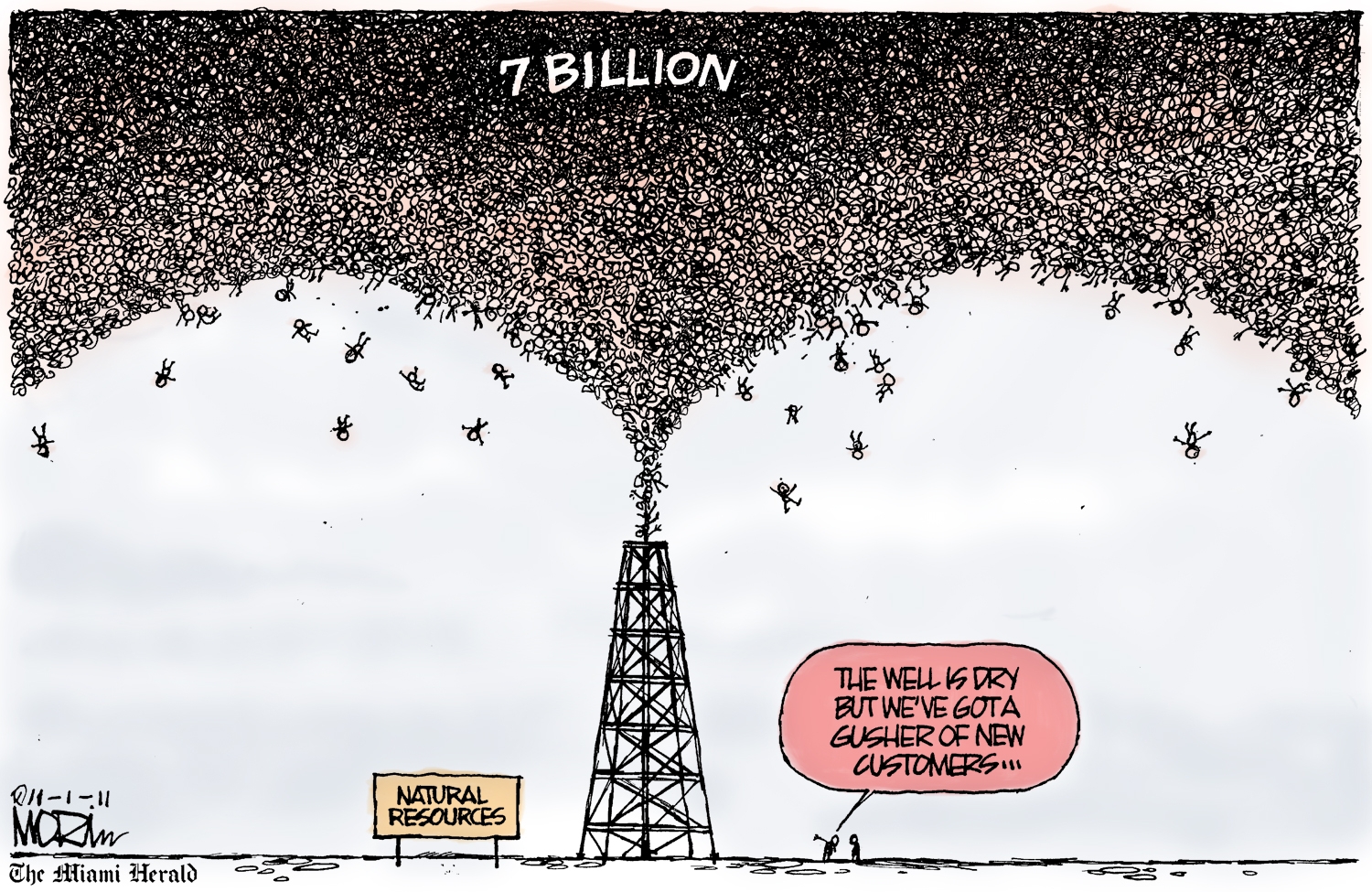
Is Overpopulation a Legitimate Threat to Humanity and the Planet?
A recent Retro Report examines how the apocalyptic predictions about overpopulation made by the biologist Paul Ehrlich, in his 1968 book “The Population Bomb,” have not come to pass. Disease-resistant crops, improved health standards and a broader demographic shift from an agricultural society have kept the problem at bay. But do we still need to worry about overcrowding? Is the threat of overpopulation overblown?
* legitimate = 정당한, 타당한/ apocalyptic = 종말론적, 세상에 종말이 온 듯한/ overpopulation = 인구 과잉/ come to pass = 실현되다, 발생하다/ biologist = 생물학자/ disease-resistant = 질병에 강한/ demographic shift = 인구 통계학적 변화/ keep(hold) ~ at bay = ~의 접근을 막다, ~의 발생을 막다/ overblow = 지나치게 평가(중시)하다; 부풀리다
 과잉 수용에 우리는 여전히 걱정할 필요가 있나요? 인구 과잉의 위협은 과장되었나요?
과잉 수용에 우리는 여전히 걱정할 필요가 있나요? 인구 과잉의 위협은 과장되었나요?
1. Overconsumption Is a Grave Threat
We have to radically change how we produce what we consume. But we've done it before.
2. It’s Not a Numbers Problem
Resources are distributed so inequitably, and used so wastefully, that it is virtually impossible to know how many people the planet can sustain.
3. Asia Must Build a Less Wasteful Economy
The simple fact is that five to six billion people from Asia cannot and should not aspire to lifestyles that are currently taken for granted in the West.
4. Empower Women for the Planet’s Health
Providing family planning for those who want it could provide up to 29 percent of needed reductions in carbon emissions.
5. The Violent Side Effect to High Fertility Rates
Regions with very large youth cohorts are historically far more prone to violence than older populations.
6. Ehrlich Was Right
Expanding human populations cannot be sustained on an Earth with finite carrying capacity.
Sample Essay
It’s Not a Numbers Problem
Give our species some credit: We’ve learned a lot in the half-century since Paul Ehrlich warned that overpopulation would spell our doom.
Start with the term "overpopulation." It implies that there are too many people in relation to the planet’s resources, a concept that has fallen out of favor. We now know that resources are distributed so inequitably, and used so wastefully, that it is virtually impossible to determine how many people the planet can sustain.
We’ve also learned that it’s absurd to attribute any environmental problem to human numbers alone. Americans, for example, comprise about 4 percent of the world’s population, but produce over 17 percent of climate-changing carbon emissions. So, for the global climate, consumption in the U.S. is a much bigger problem than, say, population growth in Niger.
Does that mean that human numbers are irrelevant to environmental sustainability? Not exactly. Current inequities are not — and must not be — set for all time. Yet the planet could not support today’s 7 billion people living as Americans now do, much less a future world population of up to 11 billion.
In a sustainable, just world, Americans would consume a smaller share of the globe's resources, while those in what is now the developing world would consume more. To remain within planetary limits, we would all produce and consume differently. Those goals might be easier to achieve if we came in at the low end of the United Nations' population projections — with about eight billion human beings by 2050, rather than nearly 11 billion.
Does that require a new regime of coercive "population control"? Absolutely not. Because the most important lesson we’ve learned about population is this: Women’s rights are key. Where women have the means and the power to make their own decisions about childbearing, they have smaller (and healthier, and better educated) families.
That means the most effective means to slow growth aren’t “population” programs at all. They include efforts to educate girls, advance women’s rights, broaden access to family planning and other reproductive health services, and promote sustainable, equitable development. What’s more, those are all things we should be doing anyway.





![]() 과잉 수용에 우리는 여전히 걱정할 필요가 있나요? 인구 과잉의 위협은 과장되었나요?
과잉 수용에 우리는 여전히 걱정할 필요가 있나요? 인구 과잉의 위협은 과장되었나요?






